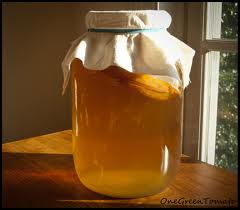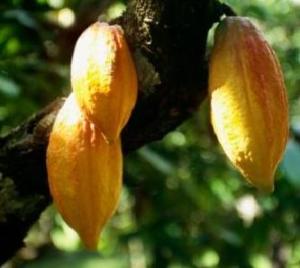GET CULTURED!
The Beneficial World of Fermented Foods
Much Aloha to Ryan Peters for the article featured on this page. Ryan is a fermented foods educator and entrepreneur. He regularly holds popular fermentation workshops in Hawaii and works with local food start-ups. His new website is FermentToBe.com.
 Step into any gourmet market and take a look around. Most everything is a product fermentation! From sourdough bread and salami, to cheese, chocolate, kimchi, and of course beer and wine. It is clear that fermented foods can be delicious. But healthy? Yes. Maybe even placed in the realm of super foods. Our modern culture has never forgot the good flavors, and now (with the stamp of scientific approval) we are discovering how and why some fermented foods in particular are profoundly good for your health.
Step into any gourmet market and take a look around. Most everything is a product fermentation! From sourdough bread and salami, to cheese, chocolate, kimchi, and of course beer and wine. It is clear that fermented foods can be delicious. But healthy? Yes. Maybe even placed in the realm of super foods. Our modern culture has never forgot the good flavors, and now (with the stamp of scientific approval) we are discovering how and why some fermented foods in particular are profoundly good for your health.
Probably no other food group has touched the world more than fermented foods. All cultures have used fermentation as a food processing technique throughout history. The benefits are many and include prolonged shelf life, better flavors, and profound health benefits. It has even touched the realm of the sacred. Before scientists understood the process of microbial fermentation many societies connected the dependable yet spontaneous process to something unexplainable, perhaps a higher power. And to some today it is still considered sacred if not for the mere existence, then for the health and pleasure giving fruits it bears.
Just What is Food Fermentation Anyway?
Fermentation is an age-old technique for transforming food and drink through the use of beneficial microbes, whether yeast, bacteria, or fungi. Once in specific conditions one or more of these microbes go to work eating available carbohydrates to grow their colonies. In exchange for the sugars they may produce various acids or alcohols, which accounts for the food preservation effect. Along the way flavors are changed or intensified and other benefits accrue (see more below).

Wine, chocolate, poi, miso, soy sauce and salami are all examples of the amazing foods and flavors created through the transformative action of fermentation. Fermentation can either be done through culturing or in the “wild” way (actual scientific description). In culturing you introduce a group of microbes (possibly of wild origins) into the food you wish to ferment. With wild fermentation you rely on the native bacteria already present on the food and in the environment to ferment. No culture added. Wild ferments always rely on native bacteria while culturing may rely on commercially produced cultures, though not in every case.
Before the discovery and marketing of bakers yeast bread was always leavened in the wild way to make sourdough. This and other foods fermented with native bacteria are examples of traditional culturing practices. The techniques we inherited from our ancestors (all ethnicities included) still apply today. They often produce superior product as well. Thankfully this knowledge is still alive and its methods being used to our benefit.
4 Health Benefits of Fermented Foods
There is more than one way that fermented foods can benefit your health. Here are four:
1. Fermentation enhances the bio-availability of some nutrients. Fermented cabbage, for instance, has more Vitamin C than the same amount of unfermented cabbage. And fermented cereal grains offer more minerals than their unfermented counterparts. This is one of the lesser realized, yet most profound health benefits. More bang for your buck (and your bite).
2. Fermentation can detoxify plant foods. This is the case with cassava, an important subsistence crop in the tropics which naturally contains unhealthy levels of hydrogen cyanide. Fermentation transforms the cyanide into a less harmful molecules, making it safe to eat over time. In the west, fermentation (and sprouting) is the only way to reduce the mineral-leaching phytates in grain-based foods like pasta and bread. The result is an easier to digest food.
3. Fermentation creates new nutrients. This one is huge. As microbes consume sugars they produce various metabolites like vitamins, bioactive peptides, organic acids and fatty acids to name just a few. This is simple and effective nutrient enhancement, and it is often overlooked. Yet is too valuable to miss.
4. The live cultures themselves. This is one we’ve all been hearing a lot about lately. Live cultures (aka beneficial bacteria) have been shown to boost our digestive function, immune system, and even alter our moods. And that is just for starters. You can find them in unheated fermented foods (assuming the foods can be eaten raw). However, quality and quantity of cultures vary across foods and production methods. How to approach this subject? The best advice I received was something like this: eat diverse sources of fermented foods produced according to traditional culturing practices.
Fermented Food Flavor
 Aside from the health benefits fermentation can improve the flavor of many types of foods. Grape juice is just grape juice until it is turned into wine, with levels of depth and aroma beyond the mere juice. The same can be said for chocolate. Have you eaten a raw cacao bean? Despite its pretty purple color it is rather tasteless and bitter. Ferment and roast it and you have the makings of a truly delicious and decadent food: chocolate.
Aside from the health benefits fermentation can improve the flavor of many types of foods. Grape juice is just grape juice until it is turned into wine, with levels of depth and aroma beyond the mere juice. The same can be said for chocolate. Have you eaten a raw cacao bean? Despite its pretty purple color it is rather tasteless and bitter. Ferment and roast it and you have the makings of a truly delicious and decadent food: chocolate.
Miso, soy sauce, apple cider vinegar, and salami are just more examples of the amazing foods and flavors created through the transformative action of fermentation. One explanation for the flavor effect of fermentation is found in the 5th taste: Umami. Still more info can be found in the gourmet section of your local supermarket. I love experiential learning.
A Toast with Gratitude
Our bodies are teaming (they always have been) with 10x more microbes than there are cells in the body. What does that tell us about ourselves? How about who exactly we are? One thing is certain: the benefits of fermented foods are real, and ready to be eaten. Thankfully a resurgence is underway in this realm, from fermentation education to companies creating and distributing high quality foods for people to heal with and thrive on. We all can thank our ancestors for not only discovering the process but passing on the knowledge. If you’re inclined you may want to thank the microbes as well. At least next time you toast your wine glasses or beer bottles know what it is you have the pleasure of drinking.












Leave a Reply